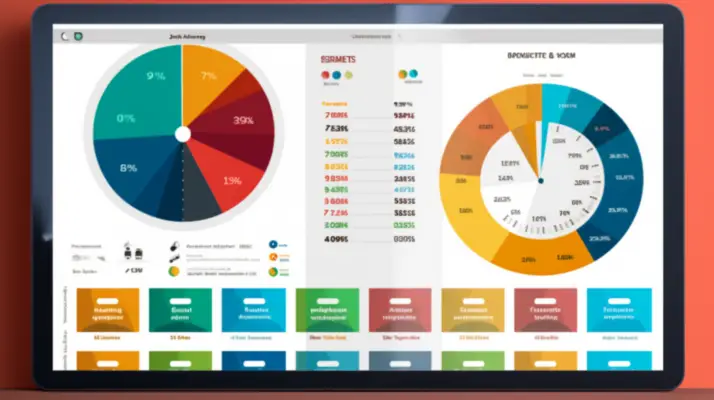Agile auditing is a relatively new approach to the traditional audit process that has gained popularity in recent years. This methodology involves breaking down the audit process into smaller, more manageable tasks that can be completed in shorter cycles. This will update the audit scope enabling internal audit to adjust to business conditions.
This approach to auditing that yields, organizations can benefit from increased flexibility and adaptability, which is particularly useful in today’s rapidly changing business environment. The agile auditing approach is based on the principles of agile project management, which emphasizes the importance of collaboration, flexibility, and adaptability.
Organizations can use this methodology to improve their audit processes by focusing on incremental improvements and continuous feedback. This approach can help stakeholders identify potential issues and risks early on and make necessary adjustments to ensure an efficient and effective audit process.
This article will explore agile auditing, its benefits, and some common challenges organizations may face when implementing it.

What is Agile Audit and How Does it Benefit an Audit Team?
Agile auditing is a contemporary approach that leverages the principles of the agile methodology to enhance the audit process. This approach enables auditors to collaborate with stakeholders, promote iterative testing, and respond to changes flexibly and timely.
Traditional audits have often been criticized for being rigid and slow to adapt to changes in the business environment. However, with agile auditing, auditors can address the common challenges that arise in traditional audit processes and deliver greater benefits to stakeholders.
| Step | Description |
|---|---|
| Planning | Identify key risk areas and develop a risk-based audit plan |
| Execution | Conduct fieldwork, gather evidence, and document findings |
| Reporting | The draft audit report, review with stakeholders and finalize the report |
| Follow-up | Monitor implementation of audit recommendations and track progress |
It involves the audit team working closely with stakeholders to establish the objectives and scope of the audit. The audit team then develops an audit plan that is flexible and responsive to changes in the business environment. The audit team uses an iterative testing approach to identify and address issues as they arise instead of waiting until the end of the audit to identify and address issues.
This methodology enables the audit team to provide timely and relevant feedback to stakeholders, which can lead to more effective decision-making.
It has been widely adopted in software development, where the agile framework has been used to promote collaboration, flexibility, and responsiveness. Internal audit teams have also embraced the benefits of agile auditing, which include increased efficiency, improved stakeholder engagement, and more effective risk management.
Benefits of Agile Auditing
The advantages of implementing an adaptable audit approach are evident in the enhanced efficiency and effectiveness of the audit process, leading to greater stakeholder satisfaction and confidence in the results.
In this case, the benefits of adopting an agile approach can be significant, particularly for internal auditors working in environments where agile software development is used. By incorporating agile principles, such as frequent communication and collaboration, iterative development, and flexibility, auditors can better respond to audit process changes and improve their work quality.
| Benefits of Agile Auditing | Description |
|---|---|
| Flexibility | Agile auditing allows for flexibility in the audit process, enabling teams to adapt to changes quickly. |
| Faster Response Times | Agile auditing enables teams to respond to audit findings and recommendations faster, leading to quicker resolution of issues. |
| Improved Communication | Agile auditing emphasizes collaboration and communication among team members, improving overall communication within the audit team. |
Key Benefits and Alignment to Business Goals and objectives
| Key Benefits of Agile Auditing | How It Helps Align with Business Goals and Objectives |
|---|---|
| Early identification of organizational risks | Helps organizations mitigate risks and align with strategic goals |
| Real-time feedback and recommendations | Allows organizations to make quick adjustments to processes and improve performance |
| Collaboration and communication with stakeholders | Helps identify areas of focus and prioritize audits based on business objectives |
| Focus on key findings | Allows organizations to address high-risk areas and improve control processes |
One of the primary benefits of these approaches is that it enables auditors to be more responsive to changes in the audit process. In traditional audit approaches, the audit plan is typically fixed at the outset, and any changes to the plan must be approved by stakeholders. This can be time-consuming and may result in delays or inefficiencies in the audit process.
In contrast, an agile approach allows auditors to work in short, iterative cycles, making it easier to identify and respond to changes in the audit process as they arise. This can help auditors to stay on track and ensure that the audit process remains efficient and effective.
Another benefit of agile auditing is that it promotes collaboration between auditors and stakeholders. This can lead to greater stakeholder satisfaction and confidence in the audit results. In an agile approach, auditors and stakeholders collaborate closely throughout the audit process, sharing information and feedback regularly.
This can help ensure that the audit process is aligned with stakeholder needs and expectations and that any issues or concerns are addressed promptly and effectively. Overall, the benefits of agile auditing are numerous, and internal auditors who adopt an agile approach are likely to see significant improvements in the efficiency and effectiveness of their work.
Agile Auditing Methodology and Internal Audit Adjustment
One practical approach to conducting audits is to follow a well-defined methodology, such as Agile auditing. The Agile auditing process combines Agile project management principles and auditing to enhance audit engagement. The Agile methodology prioritizes communication and collaboration between stakeholders, adaptation to changing circumstances, and delivering value to stakeholders.
In contrast to traditional audit plans, which are often rigid and require extensive planning and documentation, the agile methods emphasize flexibility and adaptability.
The Agile manifesto underpins this approach and advocates for responding to change, valuing individuals and interactions, and delivering working solutions. Therefore, Agile auditing emphasizes stakeholder collaboration and communication, continuous improvement, and adaptation to changing circumstances. Structure your agile auditing plan to ensure that the audit team does auditing that yields higher efficiency.
To implement and begin Agile auditing, auditors should establish clear objectives and goals for the audit engagement. They should also create a backlog, a prioritized list of audit tasks that must be completed.
The backlog should be reviewed and updated regularly to respond to changing circumstances. Agile auditing also requires regular stakeholder meetings to review progress, identify obstacles, and plan the next steps.
Common Challenges that Agile Auditing
Implementing a flexible and adaptable audit process can present several challenges for auditors transitioning from traditional to agile auditing. One of the main challenges is defining the audit scope and identifying the risk areas to focus on during the audit.
This can be challenging because agile auditing requires continuously evaluating risk areas, which may change frequently during the audit cycle. To overcome this challenge, auditors need to ensure that they have a comprehensive understanding of the business processes, systems, and operations and establish a clear understanding of the audit objectives.
Another important challenge in agile auditing involves all the relevant stakeholders, including the internal audit team, management, and other relevant departments. Effective stakeholder communication is critical to the success of agile auditing because it helps to ensure that everyone is aligned with the audit objectives and that the audit process is transparent.
To achieve this, auditors need to establish a clear communication plan that outlines the roles and responsibilities of each stakeholder and use the agile methodology, as well as the frequency and channels of communication.
A successful agile auditing process requires auditors to be prepared to adapt quickly to change. This means auditors must be flexible and responsive to changing circumstances and be prepared to adjust the audit approach if necessary. To achieve this, auditors need to have a deep understanding of the business processes and systems and be able to identify potential areas of change early on in the audit cycle.
The lack of a defined audit scope can lead to confusion and misalignment among stakeholders, which can hinder the success of agile auditing.
The involvement of all relevant stakeholders is critical to the success of agile auditing, and effective communication is key to ensuring that everyone is aligned with the audit objectives.
The ability to adapt quickly to change is a crucial element of a successful agile auditing process, and auditors must be prepared to adjust their approach if necessary.

Audit Stakeholders
Effective stakeholder management is a crucial aspect of any audit process, as it helps ensure that all relevant parties are aware of the audit objectives and can provide valuable insights and feedback. In the context of agile auditing, the role of stakeholders becomes even more critical. Agile auditing emphasizes collaboration, continuous improvement, and flexibility. To achieve these goals, the auditors must engage with various stakeholders, including the audit team, business owners, IT developers, and senior management.
To manage the stakeholders effectively, the audit team must identify them early in the audit process and establish clear communication channels. The table below outlines some common stakeholders in agile auditing and their roles:
| Stakeholder | Role |
|---|---|
| Audit team | Conduct the audit, review process documents, and report findings |
| Business owners | Provide context, identify risks, and validate audit findings |
| IT developers | Explain technical details, suggest improvements, and validate audit findings |
| Senior management | Provide support, allocate resources, and act on audit recommendations |
| Audit committee | Provide oversight, review audit reports, and ensure compliance with regulations |
The team can better understand the organizational risks and control processes by engaging with these stakeholders throughout the audit process. The stakeholders can also provide feedback on the audit methodology and help identify areas for improvement. This approach aligns with the agile principles of collaboration, transparency, and customer satisfaction.
In contrast, traditional audit approaches focus on documentation and formal reporting, with limited stakeholder engagement. As a result, the audit findings may not be relevant or actionable, and the audit process may be seen as a compliance exercise rather than a value-added activity.
Frequently Asked Questions
How does agile auditing differ from traditional auditing methods?
Agile auditing differs from traditional auditing methods in its focus on iterative and collaborative processes, frequent communication with stakeholders, and flexibility in response to changes. It emphasizes continuous improvement and adapts to the dynamic nature of modern business environments.
What are the key benefits of implementing agile auditing in an organization?
The key benefits of implementing agile auditing in an organization include increased efficiency and flexibility, improved stakeholder engagement, enhanced risk management, and faster response to changing business needs.
How can stakeholders be involved in the agile audit process?
Stakeholder involvement in the agile audit process can be facilitated through regular communication, collaboration, and feedback. This can help ensure that the audit aligns with stakeholder needs and expectations and that any issues or concerns are addressed promptly and effectively.
What are some of the common challenges faced when implementing agile auditing?
Common challenges in implementing agile auditing include resistance from traditional audit stakeholders, difficulty adapting to the agile methodology, inadequate communication, and lack of support from senior management.
What steps can be taken to begin implementing agile auditing in an organization?
To implement agile auditing, an organization can start by defining audit goals, identifying key stakeholders, and selecting an appropriate agile methodology. The audit process should prioritize collaboration, frequent feedback, and continuous improvement.

Conclusion
Agile auditing is a modern approach that breaks down the traditional audit process into smaller, more manageable tasks completed in shorter cycles. This methodology offers numerous benefits to audit stakeholders, including increased flexibility and adaptability, better risk management, improved communication, and faster response to changing business environments. Agile auditing also promotes collaboration among audit teams, management, and other stakeholders, increasing efficiency and effectiveness.
However, adopting agile auditing can also present challenges, such as proper planning and training, managing stakeholder expectations, and ensuring adequate resources. Additionally, organizations must consider integrating agile auditing with other internal controls and regulatory requirements.
Despite these challenges, agile auditing is a valuable tool that can help organizations improve their audit processes, increase stakeholder satisfaction, and better manage risk.
In conclusion, agile auditing is a modern approach that offers numerous benefits to audit stakeholders. Organizations can improve their agility, efficiency, and effectiveness by breaking the audit process into smaller, more manageable tasks.
However, it is important to consider the potential challenges and ensure proper planning and training to implement agile auditing successfully. Organizations can reap the benefits of agile auditing and improve their overall audit processes with the right approach.

Chris Ekai is a Risk Management expert with over 10 years of experience in the field. He has a Master’s(MSc) degree in Risk Management from University of Portsmouth and is a CPA and Finance professional. He currently works as a Content Manager at Risk Publishing, writing about Enterprise Risk Management, Business Continuity Management and Project Management.

